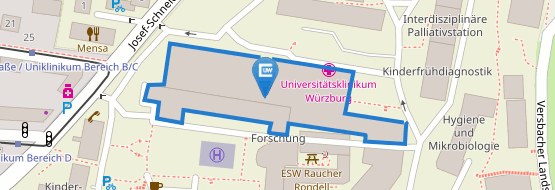The Rudolf Virchow Center
Who we are
As a central institution of the University of Würzburg, the center is currently home to fourteen research groups with a translational research focus and around 100 scientists investigating the molecular causes of health and disease. You can find us at the heart of the biomedical campus of the JMU, surrounded by both research labs and clinics giving the extra push for our translational research.
The RVZ fosters technology development and translational biomedical research.
All our scientists - from junior to senior level – follow their own visions, use their complementary expertise, and share infrastructure and instruments. We believe junior group leaders require a maximum of independence with solid financial support and infrastructure to thrive as provided by the RVZ.
The Foundation
In the summer of 2001 the German Research Foundation (DFG) approved funding for the first of three DFG Research Centers. The successful proposal of the University of Würzburg to establish the Rudolf Virchow Center envisioned a biomedical research institution that uses state-of-the-art technologies to investigate the causes of human diseases at the molecular level. In October 2009 the Rudolf Virchow Center moved into its present building, on the medical campus of the University of Würzburg and thus closer to its medical collaboration partners. This proximity promotes collaboration across disciplines. In 2013 the Rudolf Virchow Center (RVZ) was transferred from DFG to funding by the State of Bavaria and has since been a central institution of the University of Würzburg.
Scientific Infrastructure
Around 100 scientists at the Rudolf Virchow Center are dedicated to advancing the field of translational bioimaging. Cutting-edge technologies—including high-content and whole-organ imaging, intravital microscopy, super-resolution fluorescence imaging, and screening platforms—are firmly established and continually refined within our research groups and Core Units. Structural and molecular insights are further enabled by cryo-electron microscopy, X-ray crystallography, and proteomics, providing a strong foundation for interdisciplinary discovery.


